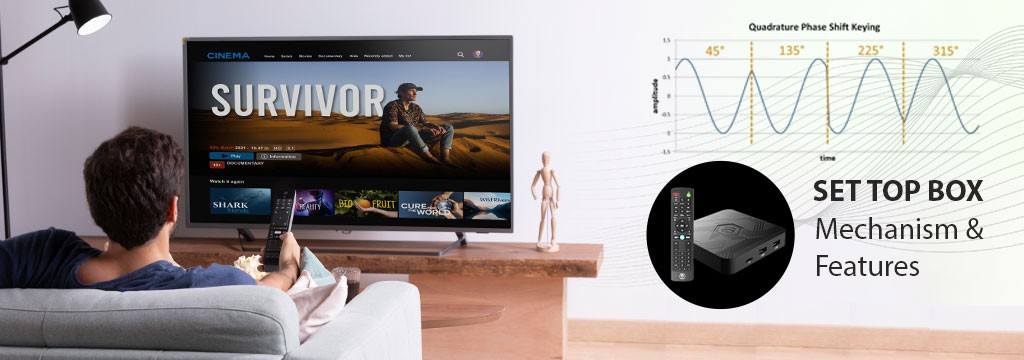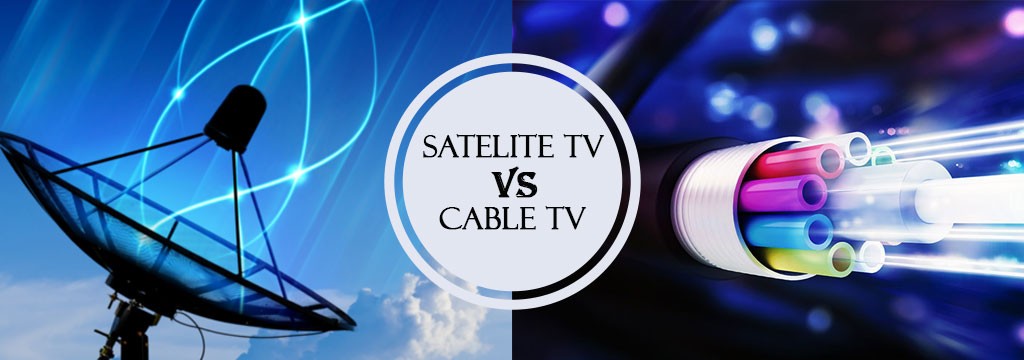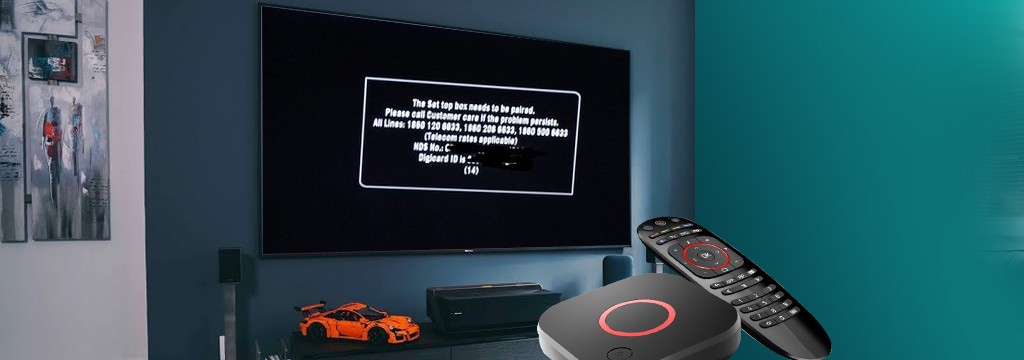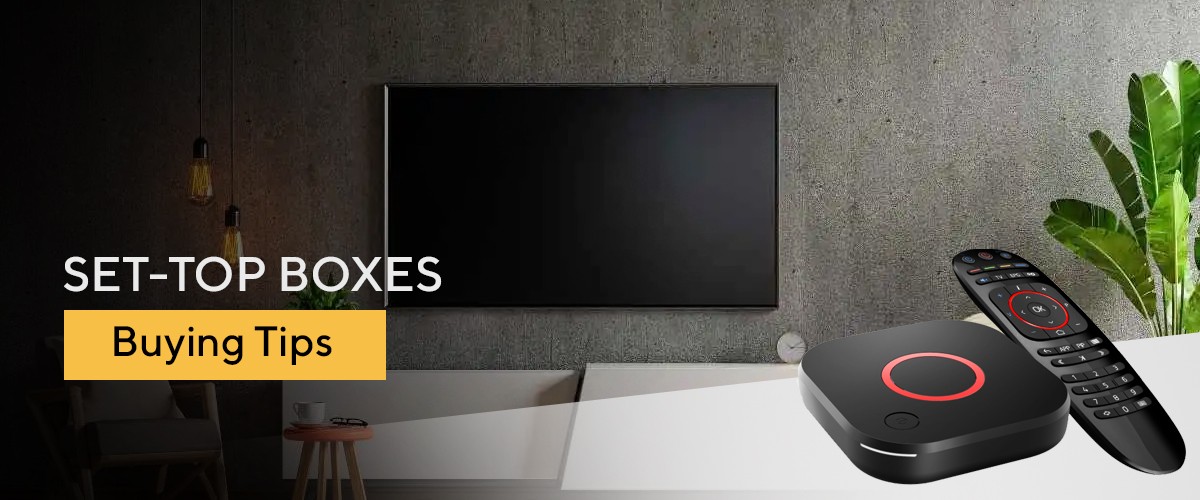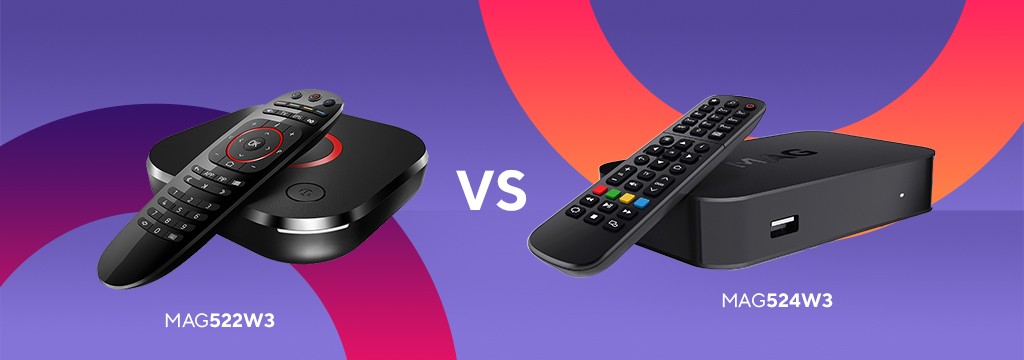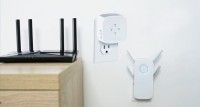Modern set-top box is also known as a set-top unit that allows digital signals to transmit through them for decoding, retrieval and also for displaying info on TV. This signal could be an internet signal or could be a television signal and is received either through a telephone connection or through a cable connection. The growing popularity of set-top units is because of the fact that it can deliver more channels than television could ever do. It receives data for multiple channels all at once but only filters out the one that a consumer wants to see. And for other rental channels and paid channels decoder has been used.
Nowadays people are using much more advanced set-top boxes where a consumer can add rental channels directly from the device by accessing the internet. This is called 2-way communication.
Mechanism
1. It is a collection of small functional modules where each one of them is responsible for performing a distinctive function. A module is one that is either made of pure software or pure hardware or in some cases, it is made of both. It is basically an interface between the TV and the broadcaster. It selects the most fruitful signals from the broadcaster TV by easily turning to one of the many of the channels. The signal is then modulated using an electronic mechanism like QPSK for exclusive satellite applications.
2. It is a device that principally connects a TV to a broadcaster by tuning to many of the input channels available, so the Set-top unit selects the appropriate broadcast TV information. And for satellite applications, the signal is digitally modulated using (QPSK),), and Orthogonal Frequency Division Multiplexing (OFDM) for cable Quadrature Amplitude Modulation (QAM), and Orthogonal Frequency Division Multiplexing (OFDM) for terrestrial.
3. The demodulator then processes the information in the selected RF channel to create a MPEG-2 Transport Stream (TS) that contains audio, video, and other information related to the selected Television show.
4. The STB usually has a modem that allows it to send and receive interactive data. Satellite and terrestrial STBs normally use traditional telecommunication modems, whereas cable STBs typically use a cable modem.
5. In general, digital television information encoded in the MPEG-2 TS may be encrypted to prevent users who have not paid for a service from viewing it.
6. A user when wishes to watch a particular program, at the same time the MPEG deMUX selects and decrypts the compressed audio and video signal for that particular program using the decryption keys which are supplied by the CASS (Conditional Access Sub System). The MPEG decoder then compresses the audio and video signal for the selective program.
7. The central processing unit (CPU) is in charge of the entire operation and conducts specialised data manipulation tasks. It often employs a Real-Time Operating System (RTOS) on top of a hardware abstraction layer to manage the STB’s resources and operations under the control of higher-level software.
8. A STB requires a ‘loader’ in addition to the kernel to allow the TV operator to upgrade resident apps’ or download ‘OS fixes’ to the STB.
9. A resident application is a program or a number of programs that are built into the memory of the STB. The STB also requires ‘drivers’ to control the various hardware devices. Every hardware component in the STB must have a driver.
10. A driver is a programme that converts commands from the TV viewer into a format that the hardware device understands. Finally, an STB OS must include a collection of applications.
Why should you buy it?
1. Set up preferred channels: A digital set-top box offers the unique technology to set your favourite channels to mark as favourites, so a customer can access them whenever he/she want. Having plenty of channels is bliss. But browsing through them to find your favourite is not so bliss moment. So this feature does come in handy almost every day.
2. Rebooting is easy-peasy: If you went for a long vacation, 7you might need longer time to re-initialize the set-top box else, it usually needs a few minutes, before you tune in to your favourite channels telecasting your favourite channels.
3. Utilizing energy efficiently: All certified set-top boxes that are sold in Canada do follow Canada’s energy efficiency regulations at all costs. So, apart from the entertainment they offer, they also keep your environment eco-friendly too.
4. No loss of data: When a user switches off the STB, there is absolutely no data loss involved in it, as the programs that are fed into the set-top box is regulated by your service provider but not fed into it. So, when you turn off your STB, no amount of data will be lost.
5. Snooze like an alarm: STBs function like alarms. It allows a user to switch between channels at the pre-allotted time slots. This feature is a lot useful when setting up parental controls where a set-top box can be switched for a particular interval of time.
6. Edit & Re-EDIT recordings: This is one of the prime features of the premium set-top boxes where a user can play their broadcasted recordings live as well as store them for later. But it also offers the feature of deleting those too. So, it is functions like a rewritable disk.
7. Universal remotes: The remotes provided in the parcels are uniquely designed that is compatible with all sizes of TVs and even with set-top boxes of other brands.
 Free Express Shipping
Free Express Shipping



